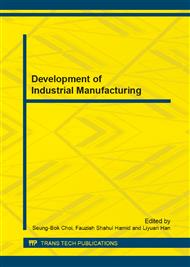p.482
p.491
p.495
p.499
p.504
p.509
p.512
p.518
p.523
Sustainability Indicators for Concrete Formwork System
Abstract:
As the premier construction material across the world, concrete has a major determining role on the effects, good or bad, of construction on the environment, meanwhile the formwork system is one of the important construction methods in building construction, which eventually will lead to more sustainable construction. This study is about the sustainability elements that respond to formwork system and their contribution to the main factors of sustainability using questionnaire survey distributed among construction experts. The economic factor had the most contribution to sustainability performance of formwork system; the environmental factors come second and at final come the social factors. Furthermore, the economic factor had seven elements effect formwork system performance and the environmental factor include six elements while social factor had only three elements.
Info:
Periodical:
Pages:
504-508
Citation:
Online since:
February 2014
Price:
Сopyright:
© 2014 Trans Tech Publications Ltd. All Rights Reserved
Share:
Citation:


